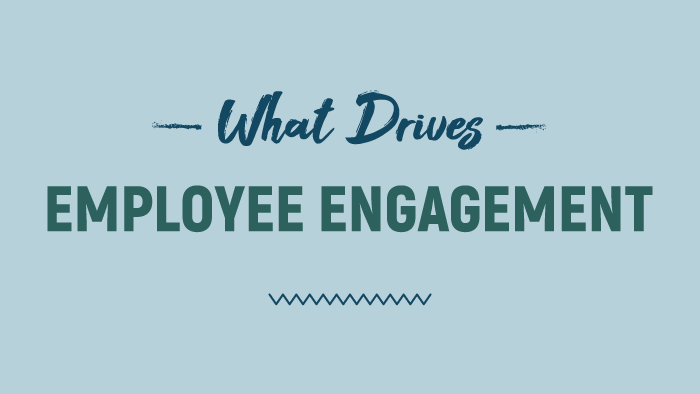The last year and a half has seen the working world flipped on its head. Thousands of jobs were lost while thousands more shifted to working from home. It was a time of rapid change and rapid adaptability. But now as mandates are lifted and businesses are opening back up and migrating back into the office, one professor predicts that the changes aren’t quite over. Anthony Klotz, an associate professor of management at Texas A&M University, predicts that as things revert to some semblance of normal there is a “great resignation” coming.
What Is the Great Resignation?
Klotz said that when there’s uncertainty, people tend to remain at their current jobs. We can then infer that employees have been waiting for the pandemic to wane to resign. Now that things are returning to pre-COVID times, those employees could be looking to make a change.
And it’s not just one man’s opinion. The Microsoft Work Trend Index found that 40% of people want to change jobs this year. The Achievers Workforce Institute found that 52% are on the job hunt.
Why Employees Leave
It’s important to know why employees leave. Sometimes it’s for personal reasons – relocation, childcare, career changes, promotions, more salary, and education.
But there are reasons people leave organizations that fall entirely on the organization itself.
- Toxic culture – Having a toxic culture will cause employees to feel undervalued, unhappy, and on the search for a new job.
- Poor managers – It’s often said people don’t quit jobs, they quit managers. These are the people employees interact with daily. They need to develop a relationship of trust, respect, and understanding.
- Lack of career growth – 82% of employees quit because they don’t see a future with the organization.
- Lack of feedback – Not providing feedback will leave employees feeling lost and adrift.
- Job shifts – While this may be out of your control entirely, not providing the reskilling and upskilling needed for employees to stay in their current roles will have them looking elsewhere.
- Poor work-life balance – Not proving this will have employees feeling stressed and anxious.
- Lack of employee recognition – Not recognizing employees will make them feel undervalued and underappreciated.
Combatting Employee Disengagement
Despite the effects of COVID-19 on the workplace, according to Gallup, employee engagement did see a rise to 38%, the highest since 2000. That same study found that 13% of workers are actively disengaged. So, how can you and your organization work to boost employee engagement and retain your employees?
What Employees Want
The Achievers Workforce Institute also found that:
- 21% say they are very engaged and planning to stay
- 66% would be more engaged if employers improved company culture
- 52% would be more engaged if their employer improved diversity and inclusion
To see what else boosts employee engagement, check out our infographic on the drivers of engagement.
What You Can Do
Retention strategies are always shifting. Here are some tips to help keep employees engaged and in their roles.
1. Listen Up
To keep employees engaged and invested, it’s vital to listen to their needs. Show employees that they are heard by using active listening. By maintaining eye contact, nodding along, and paraphrasing, employees will feel heard and valued. When employees feel heard and valued, they are more engaged and more likely to stay.

2. Aid in the Work-Life Balancing Act
Employees have the same concerns about productivity as you, to the point where they will come in early and stay late to the detriment of their health. This can lead to burnout, stress, disengagement, and turnover. Most employees don’t want to resign, so consider a hybrid or flexible working situation. Let employees work from home a few days a week and come into the office on other days. Letting employees choose where they work their best is a great way to keep them engaged.

3. You Better Recognize
A large key to retaining employees is creating a culture of recognition. When employees feel underappreciated, they feel stress and sometimes resentment and will begin looking for work elsewhere. To build this culture, be transparent and open in your communication, and recognize those employees that are new, having done something well, or have been there for a long time. Celebrating those accomplishments will foster a sense of community in your organization.

4. Train, Train, Train
Investing in the learning and development of your employees increases their satisfaction, which can boost their engagement. Essentially, it’s an incentive to stay. Investing in your employees makes them feel appreciated. On top of that, you can customize training to your business, thus creating a learning culture.
You may worry that developing a training program is a big undertaking, and the result would leave employees off the floor or not focused on work for long periods of time. That’s where microlearning comes in. These short, yet informative, videos are skill-based and last only a few minutes.
But does it work? In the study “Micro-Learning: A Modernized Education System,” 81% of respondents said that microlearning is the best learning system for their working environment.
This data shows that employees see the highest value in training that’s available in the moment of need.
This type of training can also be used when jobs shift, whether because of advancements in technology, promotions, mergers, or acquisitions. By setting up career paths, you can decide which skills employees will need in their new positions and start them on the right path. Reskilling and upskilling are going to become a vital part of keeping manufacturing and service workers as technology automates a lot of positions.
If you love the idea of providing employees with personalized skill development, but lack the bandwidth to create this sort of customized training, BizLibrary is here to help! Our new skills development platform, BizSkills, comes with pre-mapped libraries of job roles, skills, and content that make it super simple for you to provide customized learning plans to each employee. Learn more here!
BizLibrary’s vast content library for prescriptive and elective content provides thousands of videos covering soft skills to safety. Giving employees the chance to learn and explore will keep them engaged, making them feel like a valued part of the organization worth investing in. As we move into the future and post-pandemic world, it’s critical that you are listening to employee feedback, building a better culture, helping employees better balance work and their life, and training them for whatever’s to come.


